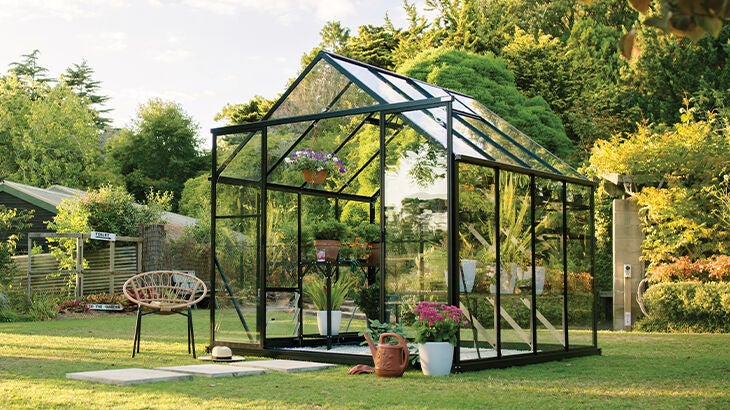Country -
Through the looking glass

As recent events have demonstrated, New Zealand’s weather is going to become more variable and extreme, which has serious implications for the way fresh produce is grown – and where.
The escalating cost of living, rising wage costs and disrupted supply chains mean there are real questions around the country’s domestic food security and affordability, leading Kiwis to consider more carefully the ways they can have more control over their household food chain.
Bayleys national director rural Nick Hawken says as the picture becomes clearer post-Cyclone Gabrielle and other flood events about how our traditionally-productive land can be salvaged and what can be done going forward, those with lifestyle landholdings are well-placed to come up with a personal action plan towards greater self-sufficiency.
“With the advantage of having land, lifestyle block owners have the opportunity to establish a more resilient garden-to-plate focus that goes beyond simply a raised vegetable garden and a handful of fruit trees and includes greenhouses to allow year-round growing cycles.
“At last year’s Fieldays, there was real interest from lifestyle property owners in the greenhouses on display and these structures can be another piece of important infrastructure to add value to the landholding which may already support chickens or livestock for consumption.”
As environmental awareness grows and people take more interest in the provenance of what they are eating, there’s increasing acceptance that going back to basics is a great way forward.
“We are all being hit in the pocket at the supermarket with fruit and vegetable prices going through the roof and with the cost of labour, workforce shortages at harvest time and everything that nature has thrown at us weather-wise, this upward trend can only continue,” says Hawken.
“Growing your own produce with covered, more resilient options like greenhouses means you can extend the growing season, know the inputs, have the satisfaction of seeing the process from seed to harvest, to eating and preserving, and involve the kids in the family’s food chain without the need for transportation, refrigeration, and unnecessary packaging.”
Shannon Funk, sales and marketing manager at Winter Gardenz, New Zealand’s leading greenhouse provider says there’s been increased demand right across New Zealand for greenhouses, and an upswing from lifestyle block owners, who often purchase larger custom-built architectural-style greenhouses.
Winter Gardenz founder John Herrick has an engineering background and was seeking out a new enterprise more than a decade ago when, travelling in Europe, he noted the use of strong transparent polycarbonate material for conservatories in Germany.
He also observed on his travels that greenhouse design had failed to evolve as consumers turned to store-bought food, so he hit on the idea of a new style of well-designed and resilient modular kitset greenhouses for both growing food and as recreational/leisure spaces.
Today Winter Gardenz manufactures residential and commercial greenhouses locally using high-quality polycarbonate and toughened safety glass.
With testimonials from clients endorsing the resilience of the greenhouses, including surviving the Canterbury earthquakes, the greenhouses are designed with high wind tolerances and are built for New Zealand conditions.
Funk says replacement parts are readily available if, during extreme weather events like Cyclone Gabrielle, any damage occurs.
“That's the great thing about dealing with a New Zealand company as we have on-the-ground customer service and stand behind our warranties, unlike imported greenhouses that are not as strong and also don’t usually have any local guarantees or ability to offer practical solutions.”
In deciding where to position a greenhouse for optimal productive use, Funk says space isn't usually a limitation for lifestyle block owners but there are some key things to consider like a level site and good sunlight.
“Ideally, the greenhouse will be far enough away from any large trees that can cast shadows, and if you are in a high wind zone, some sort of windbreak is ideal for protection.
“You can collect water from your greenhouse gutters into a tank and use a pump for watering, you could plumb a tap in if location and budget allow, or if you are going to get really serious about growing, then automated watering is a really worthwhile thing to invest time and money in to.”
Funk says having a power source nearby for hooking up lights, fans and a heater is also a great idea, and some clients are buying architectural-style greenhouses to extend living space.
Tried and true household staples like tomatoes, lettuces, courgettes and herbs are easy to grow and give good return on effort, particularly when you look at the cost of fresh produce in supermarkets, but Funk says the world’s your oyster when you have a greenhouse – and there is also potential to have a side-line income from excess produce.
“Do a little research to find out what produce or plants sell in your area for a high price, and what you can realistically grow with your available time, expertise, and greenhouse space.
“With more control over temperature, moisture, and airflow, you can grow plants not normally grown in your area or out of season because you can effectively manipulate the conditions.
“We have customers growing rare tropical plants to sell online or to nurseries, others growing unique high-value produce like heirloom tomatoes, or even housing rare birds in our mesh houses.”
Read more...